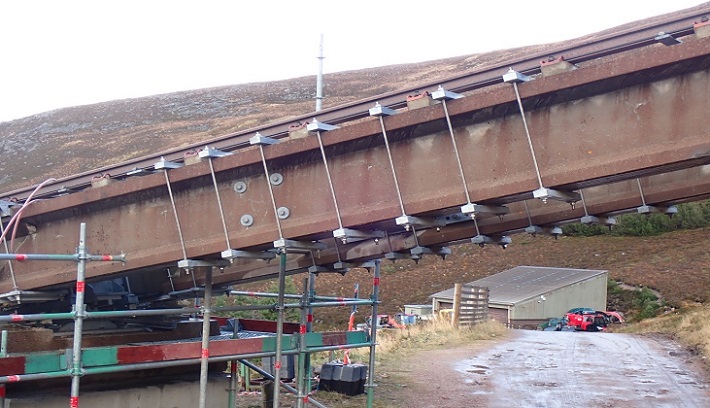
In Part 1 of this post (see here) I suggested there are at least two other major parties who should have been included in Highland and Island Enterprise (HIE)’s funicular court cases if these are intended as serious attempts to recover public money rather than an attempt to deflection attention away from HIE’s own sorry role in the debacle.
Who was responsible for the failures of the “I” beams?
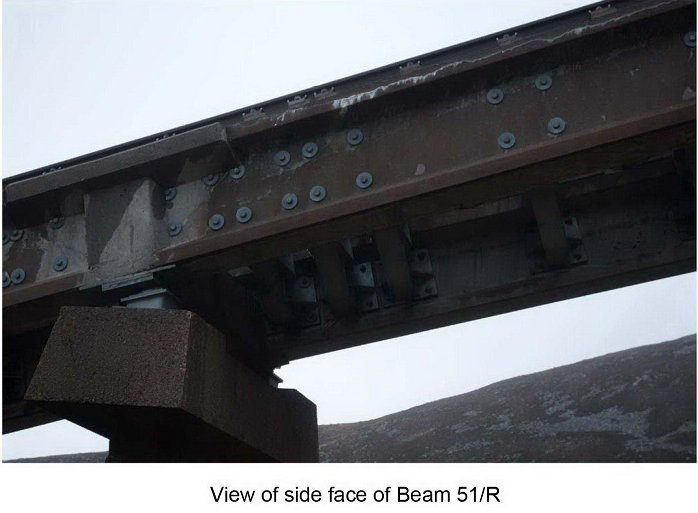
ADAC was commissioned by HIE to conduct surveys into the condition of the funicular and in 2017 included this photo along with the following commentary on page 2 (highlights are my own):-
“2 Field observations:
2.1 The beam in question was observed from ground level and was some 3m above head height.
2.2 A crack was clearly seen running along the length of the beam positioned at about mid height of the top flange. It appeared to extend from the lower end up to about mid span. See appendix B for a sketch and photo showing this.
2.3 Some comment on observations:
- The writer has been carrying out annual inspections for the last three years. This feature was observed for the first time during last year’s inspection.
- The crack is evident on both sides of the beam at the same height and over the same length
- The crack is particularly evident due to calcite bleed, showing up white. This was seen as significant at the low end, diminishing along the length.”
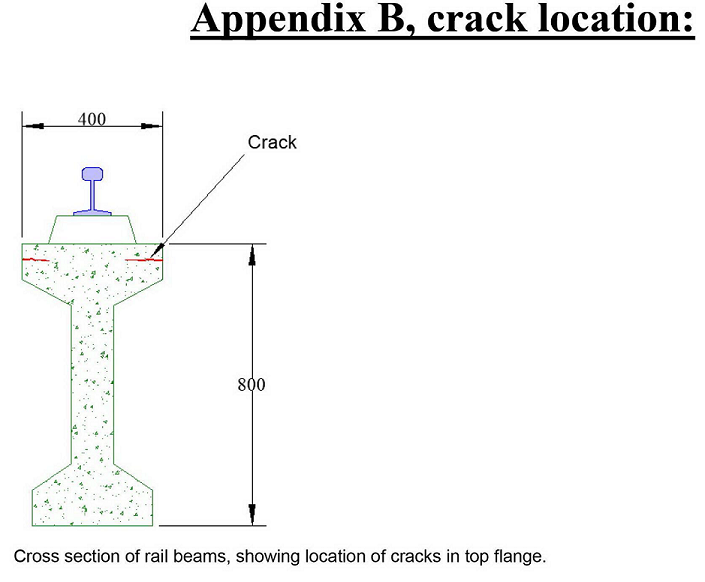
And pages 3 & 4:-
4.2 The section was reviewed on the assumption that the top 50mm had delaminated and was no longer effective. This would lead to a number of adverse effects, each were considered in turn………………………….
4.3 Loss of compressive stress area. The section was assessed in its reduced state and was found to be acceptable.
4.4 Sagging moments were assessed in the one end pinned, one end continuous case for the reduced section. These were found to be acceptable.
4.5 Loss of containment to the Halfen [channel/rail coupling] and support plinths. This is not a calculation case. This will require vigilance on an ongoing basis, but any loss is not expected to be catastrophic.
4.6 Corrosion of the reinforcement would be a long−term problem, which will not occur once the long−term repair has been carried out.
5 Conclusions:
5.1 It was concluded that the observed crack were a developing situation, due to the fact that it was only first noticed in 2016 and that the calcite bleed is more developed at one end.
5.2 It is thought that the problem is a latent defect within the original fabrication of the beams, most likely due to a cold joint within the concrete pour.
5.3 It was concluded that there is no imminent danger of the beams collapsing.
5.4 If left the beams will continue to deteriorate and stability issues would arise.
In Appendix B shown above the red lines are the cracks in the “I” beam, BUT, as the beam end is hidden by the insitu casting, it is probably only a guess as to how deep the crack actually extended. The crack may have extended right across the top flange meaning it had completely delaminated! These beams are about 18m long and the crack extended up to about half its length….9m; from “being noticed” in 2016 to almost 9m in 2017!!!
The concrete “I” beams were made off site in a factory where conditions of heat and humidity could in theory be controlled more successfully than on the mountain itself. Paragraph 5.2 explains who I suspect should be the subject of a fourth case:.
“It is thought that the problem is a latent defect within the original fabrication of the beams, most likely due to a cold joint within the concrete pour”.
(1) Who was the manufacturer of the “I” beams?
(2) Why, if the content of the ADAC Structures report is correct, are they not the subject of a court case?
(3) Is it because, as part of the “cost-saving” exercise by HIE to keep the build under budget, the specifications for the “I” beams were kept to the bare minimum requirements?
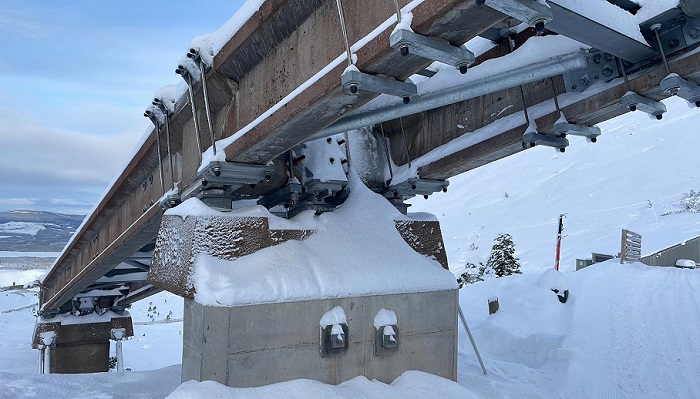
Photo (1) top & (2) are of the same part of the track, but compare the amount of reinforcement on the upper “I” beam in photo (1) to the lower seen in photo (2)! What is wrong with the upper beam? It is obviously in a worse state than the lower!
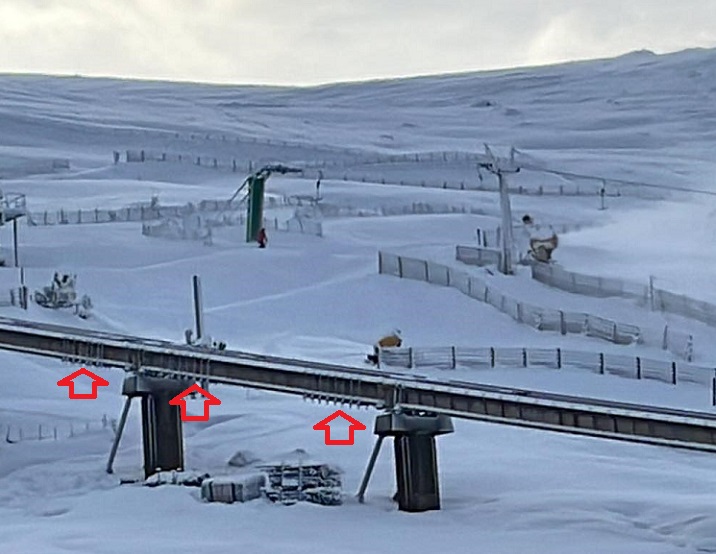
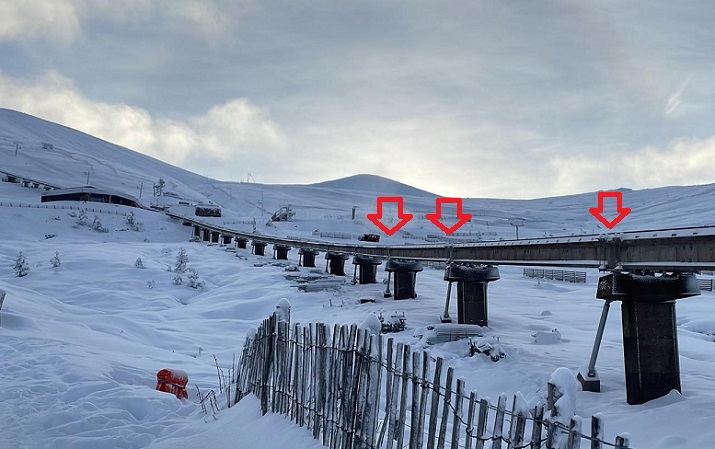
And then on photos (3) & (4) the reinforcing, as far as can be seen, is mostly at the insitu blocks, but look again at photo (3). The upper two “I” beams have quite a substantial amount of reinforcing, again suggesting the beams aren’t strong enough. Is all this reinforcing an attempt to strengthen the “I” beams and prevent further delamination? It certainly looks like it.
The fifth potential court case
A reminder of what the Public Audit Committee which investigated the funicular construction said:


Apart from what it says about HIE’s relationship with Morrisons, two further sentences stand out from that statement.
“Following advice from its project managers, Turner and Townsend…….. That was undertaken in partnership with the company (i.e.Morrison Construction),and with our professional advisers (i.e. Turner and Townsend) at the time.
Why are Turner and Townsend, as project managers, not part of the court cases? Is it because HIE’s senior management asked for changes to the specification making them liable as well? Will they be called as witnesses and, if so, by which party?
What needs to happen?
The potential for legal action has been used by HIE for four years now to avoid having to explain what went wrong with the funicular with no obvious progress at the court of sessions as of Nov 2022. Is HIE hoping that these cases will just quietly disappear, overtaken and forgotten about because of some other scandal?
The funicular construction and repair has now cost the public some £50million + and still we are no nearer to learning what went wrong. HIE’s legal cases concerning the original construction appear the best chance we have at present of establishing the truth, even if no money is ever recovered. With the funicular propped up with so much ironmongery the public deserves to know what went wrong and that the repairs have fixed the problems before the funicular re-enters service.
Source link
